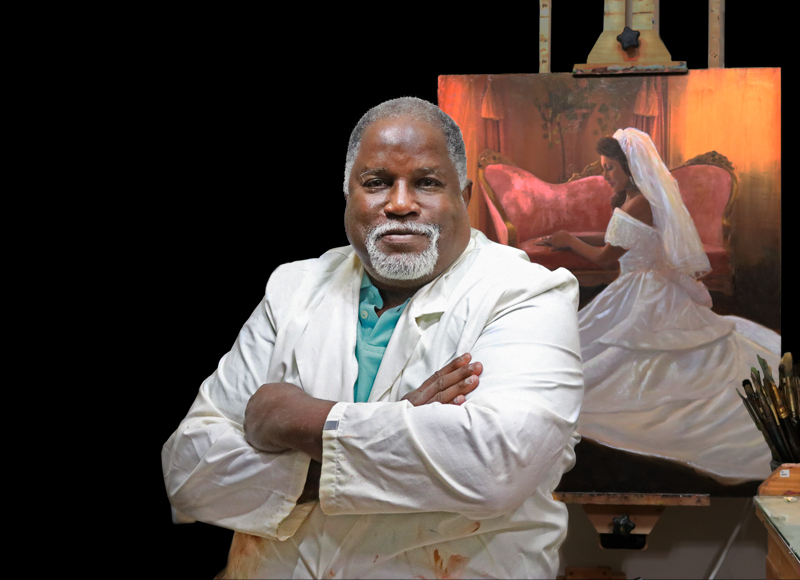NASA Engineer
Photographer
and Painter
by Bill Hedrick
It has been said that “Life is 10 percent what you make it and 90 percent how you take it” and nobody understands that better than Carver Shivers, of Houston, Texas. It’s a lesson he learned from his father, Clarence Shivers, who was part of the 332nd Expeditionary Operations Group of the United States Army Air Forces in WWII known as the Tuskegee Airmen. This elite group of aviators helped encourage the eventual integration of Black military aviators in the U.S. armed forces and flew more than 15,000 sorties in Europe and North Africa during WWII and earned more than 150 Distinguished Flying Crosses with one of the lowest loss records of any escort fighter group in the war.
Carver Shivers describes himself as an “Air Force brat,” growing up mostly in Europe and Asia and graduating from high school in Madrid Spain before attending the Air Force Academy and serving as an Air Force pilot in the tradition of his father. Although he faced some of the same challenges as his father, Carver admits that, throughout his childhood and his career, the positives far outweighed the negatives. But it was art, the ability to create something from within as an expression of who you are and how you feel, that became a haven from some of the trials and tribulations of life for both men.
Years later, Carver witnessed his father receive national recognition he so richly deserved when he was asked to sculpt a statue commemorating the Tuskegee Airmen. On the grounds of the Air Force Academy in Colorado Springs, Colorado, you will find a life-sized statue of a Tuskegee Airman sculpted by Clarence Shivers, a tribute to a man and his art.
Like his father, Carver also maintained two careers. With an engineering degree from the Air Force Academy, Carver went to work for Lockheed Martin where he honed his photographic skills photographing objects that would be onboard the Space Shuttle. In 1976, he was hired by NASA as a mechanical engineer, programmer, and designer. “I worked on training astronauts to land the Space Shuttle from orbit,” he explains. “I also worked on the design of the Space Shuttle’s main engines prior to its very first flight and worked on the design and maintenance of the landing gear system.”
It was an exciting time and Carver became close friends with several crew members, including Ron McNair who would be one of the crew members lost on Challenger. As an astronaut trainer on the STS Shuttle Simulator, training astronauts to fly the Shuttle from deorbit to landing, Carver had many memorable experiences while interacting with astronauts on a one-on-one basis. “One of the most interesting stories for me was when one of the astronauts bet me $100 that he could roll the shuttle on landing approach during a simulation run and still land the shuttle safely. I lost that $100. These guys were good.”
Still, Carver Shivers considers himself to be a “painter” first. The camera is one of the creative tools he uses to attain the final outcome. As digital painting software and techniques evolved, Carver worked with all of them. But the brush and new canvas was still his ultimate means of expression.
“Most of my works are in paintings now and most of my clients are doctors, lawyers, judges and other professionals who are looking for portraits to hang in their lobbies and offices,” he explains. “I take photographs of my clients now because no one has the time to sit for multiple sessions. I use my iPad so that I can then paint on canvas from the iPad image.”
In 1995, Carver Shivers joined the Professional Photographers Guild of Houston and was named President of the organization in 2005. “I love being in the Houston Guild because of the wonderful people I’ve met and their willingness to share their love for photography,” says Carver. “I believe it is really important to be a member of the Texas Professional Photographers Association as well as your local guild. You learn so much in terms of photography and the business of photography. The more you participate, the more you learn, the more you improve your craft.”
Carver’s wife, Louise, is a retired NASA engineer as well. The challenges they faced and the determination to live life to its fullest in spite of what comes your way are lessons they passed on to their two sons, Garrett and Jordan, who have some big shoes to fill.
